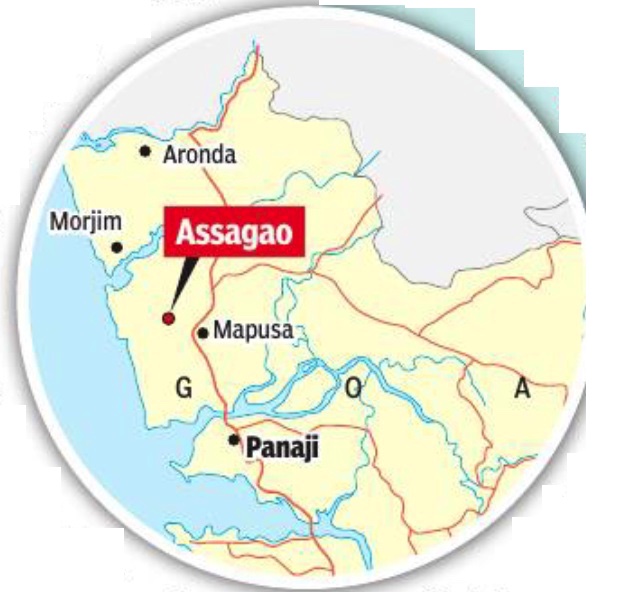Assagao
This is a collection of articles archived for the excellence of their content. |
Restaurants, food outlets
As in 2024
Newton Sequeira, March 10, 2024: The Times of India

From: Newton Sequeira, March 10, 2024: The Times of India
In 1985, when Goa’s tourism industry was not the sumptuous platter it is now, the Fonsecas of Assagao decided to open Astoria, the village’s first restaurant. For 25 years it was the only eatery at Assagao, but now there are close to 200 establishments, many of which have earned the ‘gourmet’ cachet.
“Back in the day my family would go to a restaurant called O’Coqueiro at Porvorim for celebrations because that was the only option and the owner at the time was also from Assagao,” said Clayton Fonseca, whose parents set up Astoria.
Draw For Celeb Chefs
Over the years, Astoria has grown into a hotel and the sedate village has developed into an idyll for the well-heeled. Some of India’s best chefs have made their way to Assagao and put their secrets on the menu.
Hidden in the valley, between Anjuna’s nightlife and Mapusa’s chaotic roads, Assagao underwent a bohemian change in the early 2000s. It’s earned evocative names like ‘Beverly Hills’ and ‘Tuscany’ of Goa. At one stage, so many of Delhi’s rich came to Assagao that people started calling it ‘South Extension’s Outpost’. The village’s high-end restaurants, boutiques and wellness centres are a match for Delhi’s finest. “Assagao was the closest residential area near Anjuna and Vagator. So, people started getting homes and it became the most celebrated address to buy a house and open a restaurant,” said Akshay Quenim, Goa co-chapter head of National Restaurant Association of India. He added, “A lot of restaurants have opened in old Portuguese homes. Nine out of ten restaurants in Assagao are in homes and not in concrete structures.”
Former journalist Satish Warier was in the vanguard of Assagao’s transformation. He shut down his restaurant in Delhi’s Hauz Khas Village and opened Gunpowder at Assagao. His South Indian fare spanning spicy Andhra prawns, prawn mappas and appams has cultivated a devoted following.
Tonic Dose After Covid
“I don’t have a definitive answer to why Assagao took off,” said chef Amninder Sandhu, cofounder of Bawri. “Gunpowder got traction for the village years ago. The credit goes to the restaurants that opened there many years ago and offered great food consistently to induce people to return.”
The Covid-19 pandemic injected a creative defiance into many renowned chefs and restaurateurs who picked Assagao as their site for a bounceback. “Everybody wants to be at Assagao because the clientele that spends money and wants to experience a range of cuisines is coming to the village,” said Amey Naik, a seasoned restaurateur who opened Avo’s Kitchen at Assagao during the pandemic.
Low Risk, Quick Returns
Aside from its advantageous location, there is an important business logic attached to Assagao. “Everybody wants to put their money where the risk is a lot less and the returns are quicker. Considering the footfall all around Assagao, people are investing here,” Quenim said. “Assagao has just two streets and on them you have a restaurant every 50-100 metres.”
No wonder, over the past five years, close to 500 food licences have been issued along this belt. While the average time to break even is 3-5 years, few restaurants survive beyond 2 years. This means about 200 eateries are operational today. For travellers, trying a new dish is always on the bucket list. For restaurateurs looking for a springboard, there is no better place than the melting pot of Assagao.
Test Lab For Bright Ideas
“You get a mixed crowd here which gives honest feedback. You then decide where to expand, or consider if you can replicate the success in metros,” Naik said. “Overheads are lower in Goa. The restaurants that succeed use their learnings to expand in other states where they get most of their footfall.”
The Goa experience provided heft to Sandhu’s effort to open an outlet of Bawri in Mumbai’s Bandra Kurla Complex.
It appears, therefore, that Assagao’s restaurants and their patrons together feed a business cycle.
A HELPING OF HISTORY
➤Assagao is quite a ‘heritage village’ with its 18th-century St Cajetan church, old colonial villas on leafy streets, and ‘therapeutic’ springs
➤Saraswat Brahmins were its early inhabitants. Later, like all of Goa, Assagao was held by the Portuguese and their influence is evident in its architecture
➤ The comunidade (association of land holders) of Assagao gave vast lands for educational institutions, making it a centre of learning. It has two colleges, two secondary schools, one higher secondary school, two government primary schools, and two private primary schools
➤Millets, beans, vegetables and flowers grow well here. ‘abolim’ (crossandra) and ‘zayeo’ (jasmine) are the preferred varieties of flowers
➤Over the past decade, Assagao has become a hub for creative businesses, designer boutiques, upscale resorts, restaurants and yoga centres, many of which are run from old homes